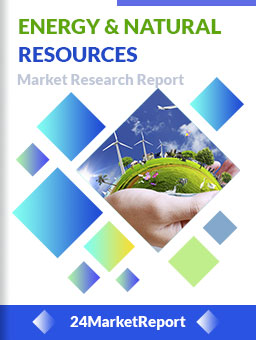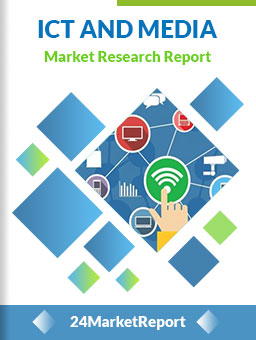
Download FREE Report Sample
Download Free sampleMARKET INSIGHTS
Global Food Irradiation Sterilization Solutions market size was valued at USD 900 million in 2024. The market is projected to grow from USD 965 million in 2025 to USD 1462 million by 2032, exhibiting a CAGR of 7.4% during the forecast period.
Food irradiation sterilization refers to exposing food to ionizing radiation to kill microorganisms, bacteria, viruses or microscopic insects. This process disrupts the DNA structure of organisms using electromagnetic wave radiation, preventing microbial reproduction while also inhibiting plant germination to extend shelf life and improve food quality.
The market growth is driven by increasing consumer acceptance of irradiated food products and regulatory approvals from agencies like the U.S. FDA, which recognizes irradiation as a safe phytosanitary treatment for fresh produce. However, the sector faces challenges including consumer misconceptions about food irradiation technology. Key players like Sterigenics International and Gray Star are investing in advanced radiation technologies to address food safety concerns, particularly in regions with high foodborne illness rates. According to WHO data, food contamination causes 420,000 annual deaths globally, creating urgent demand for effective sterilization solutions.
Rising Food Safety Concerns and Regulatory Approvals Fuel Market Expansion
The global food irradiation sterilization market is witnessing accelerated growth, primarily driven by increasing consumer awareness about foodborne illnesses and regulatory approvals for irradiation technologies. Recent data indicates that food contamination results in approximately 600 million illnesses and 420,000 deaths annually worldwide, creating substantial demand for sterilization solutions. Regulatory bodies across North America, Europe, and Asia-Pacific have approved irradiation for various food products, with approvals expanding to cover fresh produce, meat, and spices. The technology's ability to reduce pathogens like Salmonella and E. coli by over 99.9% without compromising nutritional value positions it as a preferred safety measure for manufacturers and retailers.
Growth in Global Food Trade and Shelf-Life Extension Needs Propel Adoption
To know more about market statistics, Download a FREE Sample copy
International food trade volumes have increased by over 25% in the past decade, creating demand for preservation technologies that maintain product quality during extended transportation. Food irradiation extends shelf life by 200-300% for many perishable items, significantly reducing spoilage-related losses that currently cost the global economy $110 billion annually. As e-commerce grocery sales continue their rapid expansion—projected to reach 30% of total food sales by 2030—the need for irradiation solutions that ensure product safety throughout extended supply chains becomes increasingly critical. Major food exporters are particularly investing in irradiation facilities to meet phytosanitary requirements of importing nations.
➤ Leading manufacturers report that irradiation-treated spices and herbs now account for over 60% of the U.S. market, demonstrating growing industry acceptance of the technology.
Furthermore, rising consumer acceptance is evident from market data showing 75% purchase intent for irradiated foods when benefits are properly communicated, suggesting significant potential for market expansion through education and transparency initiatives.
High Capital Costs and Infrastructure Limitations Constrain Market Growth
While demand grows, the food irradiation market faces significant barriers from the high initial investment required for sterilization facilities. Establishing a mid-sized irradiation plant requires $5-10 million in capital expenditure, with recurring operational costs for specialized personnel and regulatory compliance adding to the financial burden. Current global irradiation capacity can process less than 2% of total food production, creating bottlenecks in adoption. Many regions lack sufficient infrastructure, requiring food to be transported long distances for treatment—an added cost that makes the technology economically unviable for some producers.
Consumer Misconceptions and Labeling Concerns Impact Market Penetration
Persistent consumer misconceptions about irradiated foods being "radioactive" continue to hinder market growth despite 50+ years of scientific evidence demonstrating safety. Survey data reveals that over 40% of consumers remain hesitant about purchasing irradiated products, particularly in European markets where regulatory approval has been slower. Mandatory labeling requirements in many countries further exacerbate this challenge, as producers fear the "irradiated" designation may deter buyers. The industry faces an ongoing education challenge to overcome these biases and communicate the technology's benefits in food safety and waste reduction effectively.
Regulatory Fragmentation Creates Compliance Complexities
The food irradiation market operates in a complex global regulatory environment where approval status, dosage limits, and labeling requirements vary significantly by jurisdiction. While the U.S. and Canada have relatively permissive frameworks, the European Union maintains restrictive policies that only permit irradiation for specific product categories. Asian markets show wide variation, with China rapidly expanding approvals while Japan maintains cautious oversight. This regulatory patchwork forces multinational food companies to maintain multiple production and labeling protocols, increasing operational costs and limiting economies of scale.
Other Critical Challenges:
Technological Adaptation Barriers
Many food producers struggle with integrating irradiation into existing production workflows, particularly for fresh produce that requires careful handling post-treatment. The industry needs further development of modular, scalable solutions that can be incorporated at various points in the supply chain.
Workforce Shortages
Specialized technicians capable of operating irradiation equipment remain in short supply, with training programs failing to keep pace with industry growth. The global market currently faces a 30-40% gap in qualified personnel, particularly in emerging markets where the technology is being adopted most rapidly.
Emerging Economies and Technological Innovations Present Growth Frontiers
Asia-Pacific represents the most significant growth opportunity, with the region's food irradiation market projected to expand at 9.2% CAGR through 2032—outpacing global averages. Rapid urbanization, growing middle-class demand for safe food, and government investments in food safety infrastructure are driving adoption. Countries like India and Indonesia are establishing national irradiation networks to support agricultural exports and domestic food security, creating new revenue streams for technology providers.
Advanced Application Development Opens New Market Segments
Recent advancements in precision irradiation technologies enable targeted treatment of specific pathogens while preserving delicate food characteristics—a breakthrough particularly valuable for premium products like organic produce and gourmet ingredients. The development of compact, energy-efficient systems allows for decentralized processing closer to production sites, reducing logistical challenges. Major industry players are investing heavily in these innovations, with venture funding for food tech sterilization solutions increasing by 150% in the past five years alone.
➤ Pilot programs integrating irradiation with blockchain traceability systems have demonstrated 30% higher consumer acceptance rates by providing transparent safety documentation.
Strategic partnerships between irradiation providers and retail chains are also emerging as a key growth vector, particularly for private-label products where brands can more effectively communicate the technology's benefits directly to consumers.
Electron Beam Radiation Segment Dominates Due to High Efficiency and Minimal Processing Time
The market is segmented based on type into:
Gamma Radiation
Subtypes: Cobalt-60, Cesium-137
X-Ray Radiation
Electron Beam Radiation
Subtypes: Low Energy, Medium Energy, High Energy
Food Coating Segment Leads Due to Increasing Demand for Extended Shelf Life Solutions
The market is segmented based on application into:
Ultra-High Pressure Processing
Steam Pasteurization
Food Coating
Ozone Treatment
Others
Meat & Poultry Segment Dominates Due to Strict Food Safety Regulations
The market is segmented based on end-user into:
Meat & Poultry
Fruits & Vegetables
Spices & Seasonings
Cereals & Grains
Batch System Segment Leads Due to Cost-Effectiveness for Small-scale Operations
The market is segmented based on technology into:
Batch System
Continuous System
Innovation and Regulatory Compliance Drive Market Leadership in Food Irradiation
The global food irradiation sterilization solutions market demonstrates a moderately fragmented competitive environment, with Sterigenics International emerging as the dominant player, commanding approximately 22% market share in 2024. The company's leadership stems from its extensive network of irradiation facilities across North America and Europe, coupled with strategic partnerships with food safety regulators. Sterigenics recently expanded its electron beam processing capacity by 35% to meet growing demand for meat and poultry irradiation.
Gray Star and Ionisos account for a combined 18% market share, primarily through their specialization in gamma radiation technologies. These companies have invested heavily in R&D to develop low-dose irradiation protocols that maintain food quality while ensuring microbial safety. Gray Star's recent FDA clearance for its new seafood irradiation process illustrates the sector's focus on expanding applications.
Meanwhile, Asian players like Zhejiang Bigradium are gaining traction through cost-effective solutions tailored for emerging markets. The company reported 28% revenue growth in 2023, driven by expanding operations in Southeast Asia where food safety concerns are rising. However, Western competitors maintain technological advantages in precision dosing and automation.
Strategic acquisitions are reshaping the competitive dynamics. In Q1 2024, Sadex Corporation acquired a smaller irradiation service provider to enhance its perishables treatment capabilities. Such consolidation moves enable companies to offer comprehensive solutions while optimizing operational costs - a critical factor in this price-sensitive market.
Sterigenics International (U.S.)
Gray Star, Inc. (U.S.)
BGS GmbH (Germany)
Ionisos (France)
Sadex Corporation (U.S.)
Sterix Isomedix Services (India)
Scantech Sciences (Canada)
Benebin (South Korea)
Tacleor LLC (U.S.)
Rayfresh Foods (U.K.)
Zhejiang Bigradium (China)
The global Food Irradiation Sterilization Solutions market continues to evolve, with electron beam (e-beam) technology emerging as a preferred method due to its precision and efficiency in microbial decontamination. Unlike traditional thermal processing, irradiation maintains food quality while extending shelf life by reducing spoilage microorganisms by 99.9% in certain applications. Regulatory approvals across major markets, including recent expansions in Asia-Pacific countries, have accelerated adoption. The technology's ability to treat packaged foods without residual radioactivity makes it particularly valuable for ready-to-eat meal manufacturers. Furthermore, innovations in X-ray irradiation systems are addressing previous throughput limitations, enabling larger-scale commercial applications.
Food Safety Regulations Compliance
Stringent food safety standards worldwide are compelling manufacturers to implement irradiation solutions. The USDA's approval of irradiation for fresh produce imports has reduced rejection rates by approximately 35% for treated shipments, creating substantial cost savings for suppliers. Similarly, EU directives on pathogen control in spices and dried vegetables have driven a 42% increase in irradiation facility investments since 2020. This regulatory push complements growing consumer awareness, as foodborne illness outbreaks continue making headlines—recent data shows untreated foods account for 78% of documented contamination cases in developed markets.
Globalization of food supply chains has elevated irradiation's role in logistics optimization. By extending product shelf lives by 200-300% for certain perishables, the technology enables longer distribution windows and reduces waste in transit. Major retailers report 18-25% reduction in shrink rates for irradiated fresh goods compared to conventional preservation methods. This economic benefit outweighs the 2-5% treatment cost increment for high-value items. Additionally, irradiation facilitates international trade by meeting phytosanitary requirements—a critical factor as agricultural exports from developing nations grow at 6.8% annually. The technology's compatibility with organic certification in several jurisdictions further enhances its market potential.
The booming alternative protein market, projected to reach $162 billion by 2030, presents new opportunities for irradiation solutions. Plant-based meat manufacturers increasingly utilize electron beam processing to achieve microbial safety benchmarks comparable to animal products, addressing consumer concerns about 15-20% higher initial contamination risks in vegetable proteins. Customized irradiation protocols now enable texture preservation in meat analogues while achieving 5-log pathogen reduction—a standard previously attainable only through high-temperature processing. This technological advancement supports the sector's rapid 22% CAGR growth by eliminating quality compromises in clean-label products.
North America
North America leads the global food irradiation sterilization market, driven by stringent food safety regulations and high consumer awareness. The U.S. Food and Drug Administration (FDA) has approved irradiation for multiple food categories, including meats, fresh produce, and spices, creating a strong regulatory foundation. With foodborne illnesses causing approximately 48 million cases annually in the U.S., irradiation is increasingly viewed as a critical food safety measure. Major players like Sterigenics International and Gray Star dominate the region, leveraging advanced technologies such as electron beam and gamma radiation. Market growth is further supported by retailers and food processors adopting irradiation to extend shelf life and meet safety standards.
Europe
Europe exhibits steady adoption of food irradiation, though growth is tempered by strict regulatory oversight and public skepticism. The European Food Safety Authority (EFSA) permits irradiation for specific products like dried herbs and spices but imposes labeling requirements that influence consumer perception. Countries like France and Belgium have more progressive policies, while others remain cautious. Despite regulatory fragmentation, demand is rising for X-ray radiation solutions, as they offer precise sterilization without radioactive isotopes. Sustainability concerns and the push for cleaner supply chains are nudging food manufacturers toward irradiation as an alternative to chemical preservatives.
Asia-Pacific
Asia-Pacific is the fastest-growing region, propelled by expanding food production and government-backed food safety initiatives. China and India account for significant market share, with irradiation used extensively for spices, grains, and seafood. The region benefits from lower operational costs and increasing export requirements, particularly for irradiated fruits and vegetables. However, consumer education remains a hurdle—many still associate irradiation with radioactivity. To address this, companies like Zhejiang Bigradium are investing in awareness campaigns while scaling up gamma radiation facilities. Japan and South Korea also contribute to growth, driven by tech-driven food safety demands and high-value exports.
South America
South America’s market is nascent but shows promise, especially in Brazil and Argentina, where agriculture-driven economies prioritize food preservation. Brazil actively uses irradiation for poultry and tropical fruits, supported by ANVISA (its health regulatory agency). Challenges include inconsistent enforcement of standards and a preference for traditional preservation methods. Smaller markets like Chile are gradually adopting irradiation for specialty exports, such as salmon and avocados, though infrastructure limitations persist. Regional players like Sadex are piloting modular irradiation units to cater to cost-sensitive producers.
Middle East & Africa
The Middle East and Africa demonstrate uneven adoption, with Gulf Cooperation Council (GCC) countries leading due to heavy reliance on food imports. The UAE and Saudi Arabia employ irradiation for perishables like dates and halal meat to ensure compliance with international standards. In Africa, South Africa stands out with well-established irradiation facilities for fruits and spices, while other nations lag due to limited infrastructure. Increasing urbanization and food security concerns are driving incremental investments, particularly in electron beam technology, which aligns with the region’s focus on scalable, non-isotope solutions.
This market research report offers a holistic overview of global and regional markets for the forecast period 2025–2032. It presents accurate and actionable insights based on a blend of primary and secondary research.
✅ Market Overview
Global and regional market size (historical & forecast)
Growth trends and value/volume projections
✅ Segmentation Analysis
By product type or category
By application or usage area
By end-user industry
By distribution channel (if applicable)
✅ Regional Insights
North America, Europe, Asia-Pacific, Latin America, Middle East & Africa
Country-level data for key markets
✅ Competitive Landscape
Company profiles and market share analysis
Key strategies: M&A, partnerships, expansions
Product portfolio and pricing strategies
✅ Technology & Innovation
Emerging technologies and R&D trends
Automation, digitalization, sustainability initiatives
Impact of AI, IoT, or other disruptors (where applicable)
✅ Market Dynamics
Key drivers supporting market growth
Restraints and potential risk factors
Supply chain trends and challenges
✅ Opportunities & Recommendations
High-growth segments
Investment hotspots
Strategic suggestions for stakeholders
✅ Stakeholder Insights
Target audience includes manufacturers, suppliers, distributors, investors, regulators, and policymakers
-> Key players include Sterigenics International, Gray Star, BGS, Ionisos, Sadex, Sterix Isomedix Services, Scantech Sciences, Benebin, Tacleor, Rayfresh Foods, and Zhejiang Bigradium, among others.
-> Key growth drivers include rising food safety concerns, regulatory approvals for irradiation technologies, and increasing consumer acceptance of irradiated food products. The WHO estimates 600 million annual cases of foodborne illnesses globally.
-> North America currently leads the market, while Asia-Pacific is projected as the fastest-growing region due to increasing food safety regulations.
-> Emerging trends include development of hybrid sterilization technologies, automation in irradiation facilities, and increasing applications in meat and seafood preservation.

Speak to our Custom Research Team and get the Custom Research in a budget
Custom ResearchFrequently Asked Questions ?
A license granted to one user. Rules or conditions might be applied for e.g. the use of electric files (PDFs) or printings, depending on product.
A license granted to multiple users.
A license granted to a single business site/establishment.
A license granted to all employees within organisation access to the product.
Upto Working 24 to 48 hrs
Upto 72 hrs max - Weekends and Public Holidays
Online Payments with PayPal and CCavenue
Wire Transfer/Bank Transfer
Hard Copy




 Industry Market Size
Industry Market Size SWOT Analysis
SWOT Analysis Industry Major Players
Industry Major Players Revenue Forecasts
Revenue Forecasts Historical and Forecast Growth
Historical and Forecast Growth Profitability Analysis
Profitability Analysis
























